When to Consider a Cage Mate for Your Ferret
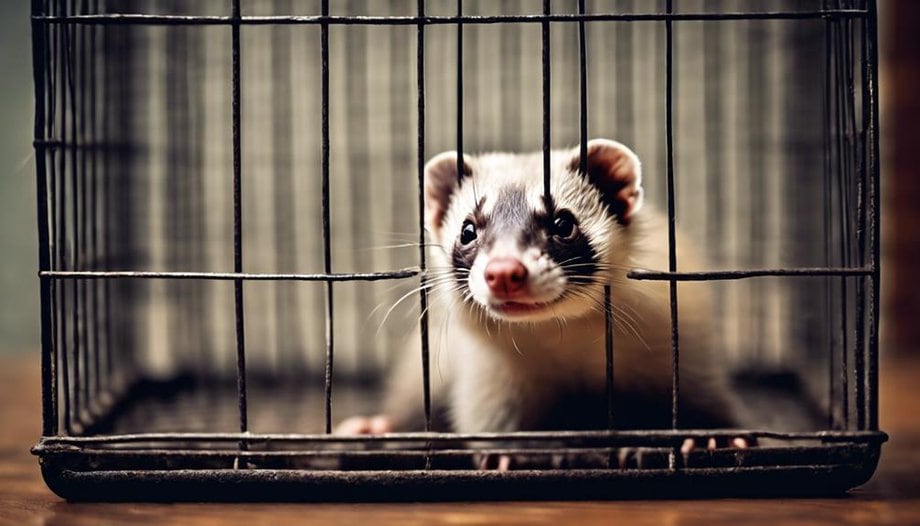
When considering a cage mate for your ferret, it's important to watch for signs that your ferret may be feeling lonely or bored. Some signs include excessive sleeping, decreased activity levels, or increased aggression. Introducing a companion can provide social interaction and mental stimulation for your ferret.
Before introducing a new ferret to your current one, it's essential to quarantine the new ferret for at least 10-14 days to ensure they are healthy and not carrying any contagious diseases. Once the quarantine period is over, you can begin introducing the ferrets in a neutral space under supervision.
Allow the ferrets to interact gradually, starting with short supervised sessions and gradually increasing the time as they become more comfortable with each other. Be prepared for some initial dominance behaviors, such as chasing or wrestling, as they establish their hierarchy.
It's crucial to monitor their interactions closely and be prepared to separate them if things escalate into a fight. With patience and proper introductions, many ferrets can successfully live together and benefit from the companionship of a cage mate.
Signs Your Ferret Needs a Companion
If your ferret frequently displays signs of loneliness or boredom, it may be time to consider getting them a cage mate. Ferrets are social animals that thrive on companionship, and having a playtime buddy can provide them with much-needed social enrichment. Some signs that your ferret may benefit from a companion include excessive sleeping, decreased interest in toys, or increased vocalization.
Introducing a cage mate can help alleviate feelings of loneliness and provide your ferret with a constant source of interaction and stimulation. When selecting a cage mate for your ferret, consider their personalities and compatibility to ensure a harmonious living arrangement.
Playtime buddies not only offer companionship but also engage in playful activities that can help keep your ferrets mentally and physically active. Social enrichment is essential for the overall well-being of your ferret, promoting positive behaviors and reducing stress. Remember to monitor their interactions initially to ensure they get along well and provide separate spaces if needed. By recognizing the signs and providing a suitable cage mate, you can enhance your ferret's quality of life.
Ferret's Behavior Towards Solitude
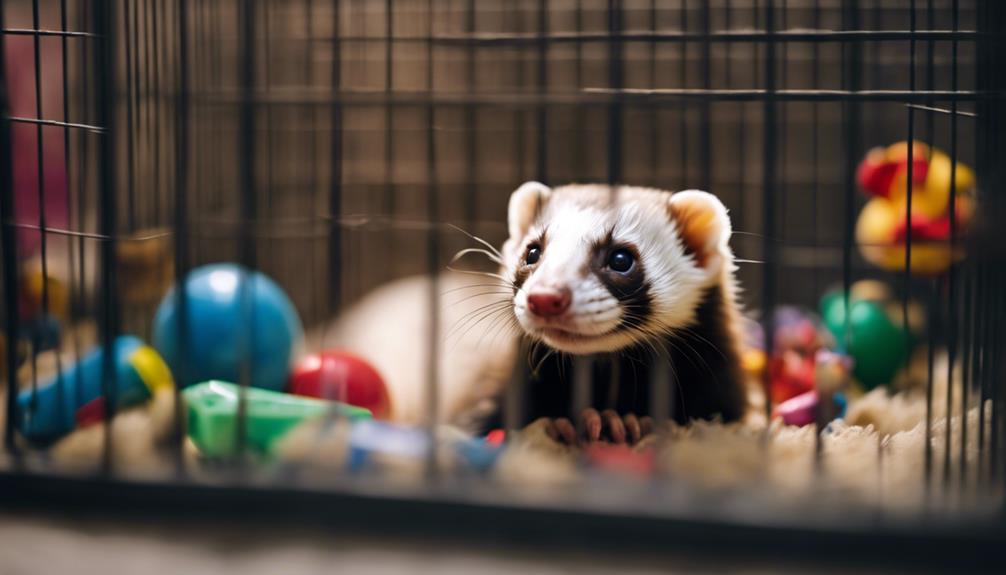
When left alone for extended periods, ferrets may exhibit behaviors that indicate their discomfort with solitude. These social creatures thrive on companionship and interaction, making solitary time challenging for them. Some common signs that a ferret is struggling with being alone include:
- Increased Vocalizations: A ferret that's feeling lonely may start to vocalize more frequently, whether through whining, crying, or even loud screeching, to express its distress.
- Excessive Sleeping: While ferrets are known for their love of napping, a ferret left alone for extended periods might start sleeping more than usual as a way to cope with the lack of social stimulation.
- Destructive Behavior: Solitary tendencies can lead to behavioral changes, such as increased digging, scratching, or chewing on objects in their environment, as a form of entertainment or to alleviate stress.
Understanding these behaviors can help ferret owners recognize when their pet is struggling with solitude and may benefit from the companionship of another ferret.
Recognizing Loneliness in Your Ferret
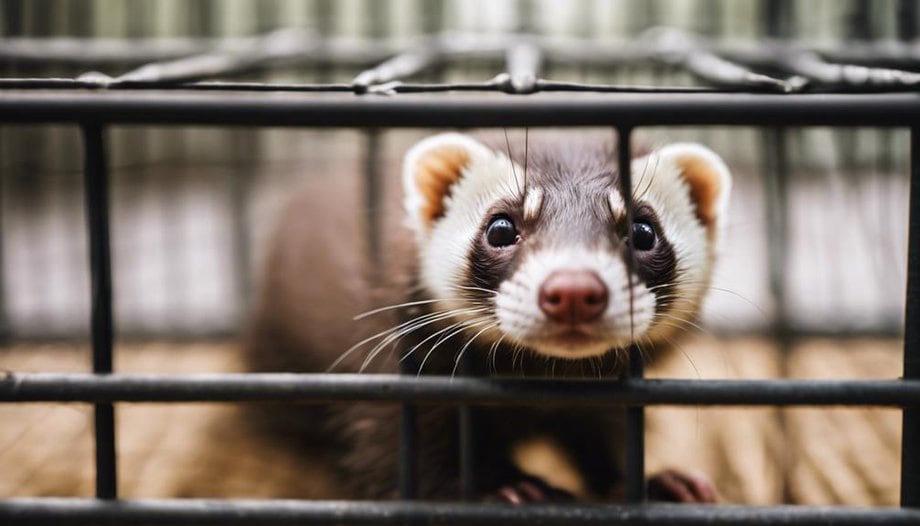
Ferrets are social animals that thrive on companionship, and loneliness can have a significant impact on their well-being.
Recognizing signs of loneliness in your ferret, such as excessive sleeping, decreased activity, or increased aggression, is crucial in addressing their emotional needs.
Providing a cage mate can offer the companionship and interaction necessary to keep your ferret happy and healthy.
Signs of Ferret Loneliness
Loneliness in ferrets can manifest through subtle behavioral cues that attentive pet owners should be aware of. To recognize if your ferret is feeling lonely, observe the following signs:
- Decreased Playtime Activities: If your ferret is usually energetic during playtime but suddenly shows disinterest or lack of enthusiasm, it could be a sign of loneliness.
- Seeking Bonding Opportunities: Ferrets are social animals that thrive on interaction. If your ferret seems overly clingy or actively seeks out attention, it may be craving companionship.
- Changes in Behavior: Loneliness in ferrets can lead to changes in behavior such as increased sleeping, excessive grooming, or even aggression. These deviations from their usual demeanor could indicate feelings of isolation and loneliness.
Importance of Companionship
Companionship plays a crucial role in a ferret's well-being, serving as a vital source of social interaction and emotional support for these sociable creatures. Ferrets are highly social animals that thrive on companionship, benefiting greatly from having a playmate to bond with. When ferrets have a cage mate, they engage in playful activities, groom each other, and provide comfort in times of stress or loneliness. The companionship benefits go beyond mere interaction; having a cage mate can prevent boredom, reduce anxiety, and enhance overall happiness for your ferret. By recognizing the importance of companionship and considering a cage mate for your furry friend, you can contribute significantly to their mental and emotional well-being.
| Companionship Benefits | Playmate Bonding | Emotional Support |
|---|---|---|
| Prevents boredom | Engaging playtime | Comfort in stress |
| Reduces anxiety | Mutual grooming | Happiness boost |
| Enhances happiness | Social interaction | Feeling of security |
Benefits of Having a Cage Mate
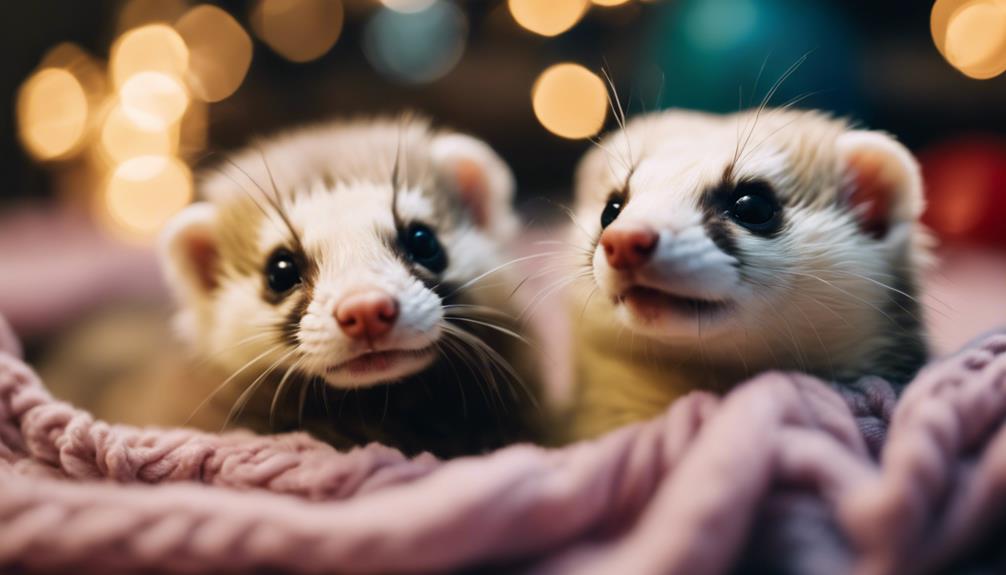
Ferrets are social animals by nature, thriving on companionship and interaction with others. Having a cage mate can provide your ferret with a constant source of social stimulation and play, reducing the effects of loneliness that solitary ferrets may experience.
The presence of a cage mate can lead to a happier, more active, and mentally stimulated environment for your furry friend.
Social Interaction Benefits
Having a cage mate for your ferret can significantly enhance their social well-being and overall quality of life. Here are some social interaction benefits that come with having a companion for your furry friend:
- Playtime buddies: Ferrets are highly social animals and having a cage mate provides them with a constant playmate. They can engage in playful activities, chase each other around, and keep each other entertained.
- Social grooming: Ferrets naturally groom each other as a way of bonding and showing affection. Having a cage mate allows them to participate in social grooming, which helps in maintaining their coat cleanliness and strengthening their social bond.
- Companionship: Ferrets are social creatures that thrive on companionship. Having a cage mate can prevent feelings of loneliness and provide emotional support, leading to a happier and healthier ferret.
Reduced Loneliness Effects
Considering a cage mate for your ferret can greatly alleviate feelings of loneliness and enhance their emotional well-being. Ferrets are social animals that thrive on companionship, and having a cage mate can prevent them from experiencing isolation.
This companionship leads to positive behavioral changes in ferrets, such as increased playfulness and reduced stress levels. When ferrets interact with a cage mate, they engage in social stimulation that mimics their natural interactions in the wild, promoting a healthier mental state.
The presence of a cage mate can also encourage exercise and exploration, as ferrets are more likely to engage in activities when they have a companion. Overall, the reduced loneliness effects of having a cage mate can significantly improve your ferret's quality of life.
Compatibility Factors to Consider

When selecting a companion for your ferret, it's crucial to carefully assess compatibility factors to ensure a harmonious living environment. Here are three key elements to consider:
- Personality Compatibility: Just like humans, ferrets have unique personalities. Observing your ferret's temperament and energy levels can help you find a suitable cage mate. For example, if your ferret is playful and energetic, a similarly spirited companion might make a good match. On the other hand, if your ferret is more laid back and calm, a mellow cage mate could be a better fit.
- Age Consideration: Age can play a significant role in how well ferrets get along. Younger ferrets tend to have more energy and may overwhelm older companions. Pairing ferrets of similar ages can ensure they have compatible activity levels and play styles.
- Health Status: Before introducing a new cage mate, it's essential to consider the health status of both ferrets. Ensuring that both ferrets are in good health can prevent the spread of diseases and ensure a safe living environment for both companions.
Introducing a New Ferret Safely
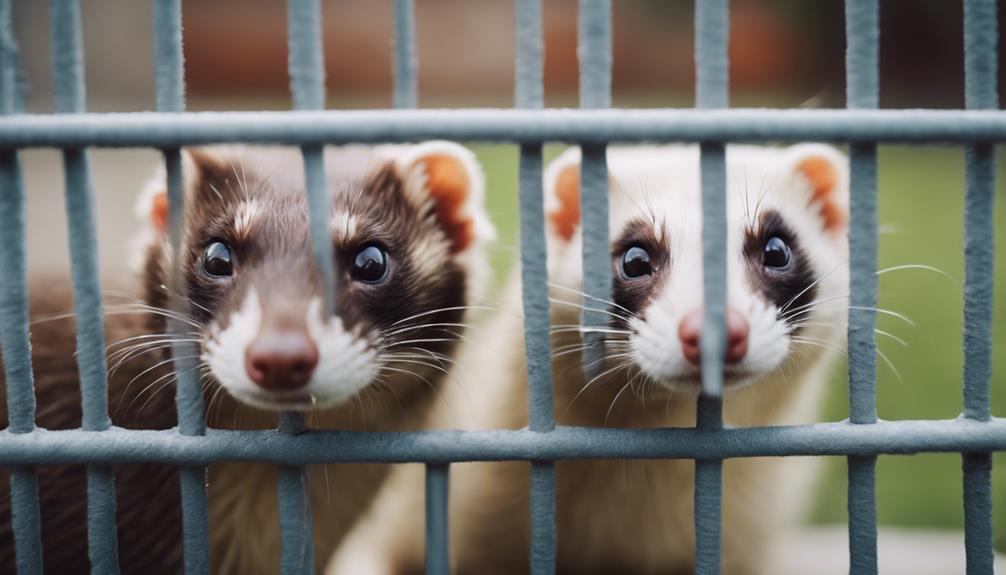
To ensure a smooth introduction of a new ferret to your existing furry companion, start by creating a neutral territory for them to meet. This neutral space helps reduce territorial aggression and allows the ferrets to interact without feeling threatened. When introducing a new ferret, it's essential to consider bonding techniques and the introduction process carefully. Choose a time when both ferrets are calm and well-rested to initiate the meeting.
When choosing the right match, consider the personality traits of both ferrets. Look for compatibility in energy levels, play styles, and levels of assertiveness. A ferret with a more dominant personality may not pair well with another dominant ferret, leading to potential conflicts.
During the introduction process, closely monitor their interactions for any signs of aggression or discomfort. Be patient and allow them time to adjust to each other's presence. By following these steps and being attentive to their behavior, you can help facilitate a positive relationship between your ferrets.
Monitoring the Relationship Progression
It's important to observe and assess the interactions between your ferrets regularly to gauge the progression of their relationship. Monitoring their relationship dynamics and behavior changes is crucial in ensuring a harmonious cohabitation. Here are three key aspects to consider:
- Body Language: Watch for positive signs such as playful interactions, mutual grooming, and shared sleeping spaces. These behaviors indicate socialization progress and growing comfort with each other.
- Conflict Resolution: Note how the ferrets handle disagreements, such as minor scuffles over toys or food. Healthy bonding activities like taking turns playing or exploring together demonstrate their ability to resolve conflicts peacefully.
- Shared Activities: Encourage bonding activities like interactive play sessions, exploring new environments together, or providing enrichment toys for them to enjoy collectively. Engaging in these shared experiences can strengthen their bond and promote a positive relationship.
Frequently Asked Questions
Are There Any Specific Breeds or Ages of Ferrets That Are More Likely to Benefit From Having a Cage Mate?
Breed compatibility and age differences should be considered when getting a cage mate for a ferret. Socialization benefits can improve behavior, but individual personalities play a big role. Careful introductions and monitoring are crucial for a successful pairing.
How Can I Tell if My Ferret Is Exhibiting Signs of Jealousy or Competition Towards Their New Cage Mate?
Recognizing signs of jealousy or competition in ferrets involves observing body language, vocalizations, and interactions. Managing behavior includes providing separate spaces, equal attention, and positive reinforcement. It's crucial to address any issues promptly to ensure harmony between cage mates.
Are There Any Potential Health Risks or Concerns to Consider When Introducing a New Ferret to an Existing One?
When considering introducing a new ferret to an existing one, it's crucial to prioritize health considerations and monitor social dynamics. Behavioral adjustments are normal during the bonding process, so patience and supervision are key for a successful integration.
What Are Some Common Mistakes That Ferret Owners Make When Trying to Introduce a New Cage Mate?
Proper introduction techniques are crucial for adding a new cage mate to a ferret's home. Rushing the process can lead to aggression and stress. Watch for behavioral signs like hissing, puffing up, or excessive hiding as indicators of potential issues.
How Can I Ensure That Both Ferrets Are Getting Enough Attention and Socialization Without One Feeling Left Out or Neglected?
To ensure both ferrets receive ample attention and socialization, establish regular playtime routines and bonding activities. Utilize socializing techniques and monitor their behavior closely. Just like two peas in a pod, they'll thrive together.











